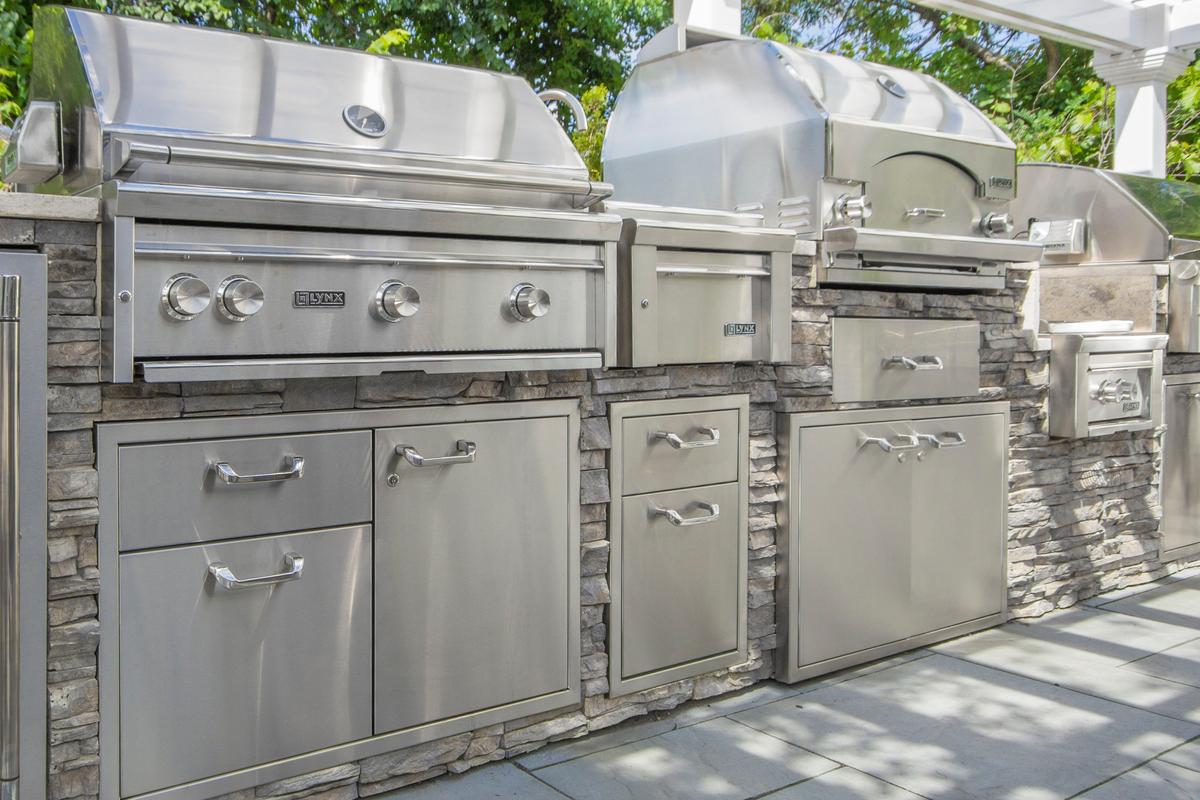Your home is likely to be the most valuable asset you own, in addition to serving as the center of family activity. When it comes time to plan upgrades, think outside the box, literally, by considering what outdoor upgrades you might want to add. Many upgrades are made with an eye toward increasing property value, which makes sense, but another perspective is to improve your quality of life now and in the coming years. All of the suggestions below can be done by experienced DIYers at costs ranging from maybe $1,000 to many thousands, but bringing in a licensed contractor is always worth considering to help prevent any “Uh oh, how’d that happen?” moments.

Outdoor Kitchen: Fire Up the Grill!
Backyard cookouts are popular among everyone, but having a dedicated gas-powered grill takes you several steps above the charcoal briquet and rolling grill level.
Putting Green: Make Tiger Woods Jealous
Playing 18 holes requires a big commitment of time and effort, driving to and from the course, but a backyard putting green lets you practice when it suits your schedule. You’ve got a small lot? Not a problem, as you can transform a neglected side yard into a small but fully functional putting green with one or two holes. The larger the available area, the more holes and the more challenging you can make the “course.” If you have enough room and a big budget, there are firms that can create a PGA-level short course for you. For smaller areas, you could install greens that include a few holes and hazards using either real grass or synthetic grasses that provide a bounce just like that of your favorite course. DIY kits are an option, but due to the need to usually move a lot of dirt and ensure proper drainage, you may want to consult with any of the many firms that specialize in home courses and greens.Best of all, you don’t even need to be a hardcore golfer to enjoy having your own putting green.

Outdoor Sauna: Feel the Heat
Those who have experienced a sauna at a hotel, spa, or gym know the bliss of dry heat loosening muscles and creating a pore-cleansing sweat that leaves your skin radiant. The good news is you can enjoy the health benefits anytime by adding a sauna to your home. Dry saunas are the type most commonly chosen for home use; these use heated stones to produce heat, and by pouring water on the stones, steam is created. A steam sauna uses a steam boiler to produce steam in a tiled room; this type can be a bit daunting for a home installation.
Swim Spa: Come On In, the Water’s Great!
A backyard, in-ground pool always seems like a great idea at first, but all too often these pools tend to be under-used, especially in an area with cold winters. Another obstacle can be a small lot or one that doesn’t allow easy access to construction equipment. A possible alternative is a ready-to-install pool with features such as powerful jets to provide swimming resistance, bio-magnetic therapy systems, or heated spa sections that can be used even if it’s snowing. Another plus to these pools is the relative ease of installation compared to traditional in-ground pools, and smaller size, which allows installation even on a small lot and translates into easier maintenance.






